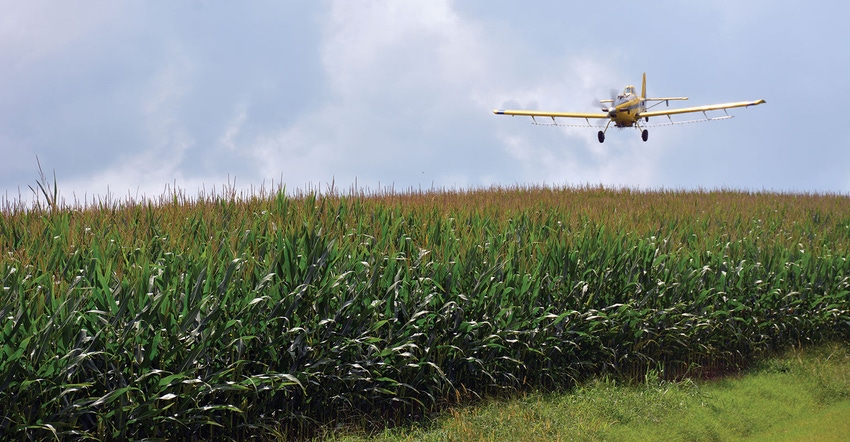
Communication is critical for a successful farmer/ aerial applicator partnership. Timing, weather conditions and product options, for instance, affect application performance and, ultimately, crop protection.
Before the plane takes off, farmer and pilot must understand the day's objectives and the factors that could alter those plans.
Katherine Holmstrom, executive director, Arkansas Agricultural Aviation Association, looks at seven questions producer and pilot should consider before each aerial application.
1. What are the conditions on the farm at application time? Wind direction, humidity, forecast, other?
The wind direction varies from day to day. Pilots are constantly checking the wind direction and speed for safety purposes and also to protect surrounding crops, based on what we are spraying. High humidity changes the drift and properties of the chemical we apply. For example, if you spray propanil products in high humidity, it is more likely to burn the crops. Obviously, the weather forecast has a huge impact on what we do. The amount of rain, wind direction, temperature, etc., all factor into every job.
2. What obstacles or challenges might a pilot encounter as he flies the field? Power lines, communication towers, pivots, odd shape?
Blind wires are a big risk to pilots when flying. Typically, a pilot won't actually see wires, they only see poles and know to look out for the wires. If you can't see the poles, often you won't see the wires. The guideline wires that come off communication towers are more dangerous than the towers themselves.
3. Do adjacent fields have crops susceptible to products being applied? Residential areas nearby? Grumpy neighbors?
The vast majority of the time crops susceptible to the chemical you are using will be in adjacent fields. It is the pilot’s responsibility to know what a neighboring farmer may have planted next to a field he is spraying. This is just one of many factors that highlight the importance of constant communication between the pilot and the farmer. Our pilots need to be aware of all the above factors so they can mitigate any risk and complete the job in the most professional manner possible.
4. Have conditions changed such that the chemical or nutrient mix should be altered?
Sometimes you get things that don't mix. Water versus oil-based, for instance. Also, some chemicals don't have a legal EPA tank mix.
5. Double check the product and rate right before application?
Always. Most pilots even triple check the product and rate before mixing and before application. It is the pilot's responsibility to apply the correct rate, droplet size and amount of water. Our pilots are constantly learning about all available chemicals and correct application. Not only do they keep the lines of communications open with the farmers, but they also keep in close contact with local chemical reps and crop consultants on the safest and most effective use of the products.
6. If the farmer needs to adjust application — different products, different rate, a new pest identified — how far in advance does he need to let the pilot know?
The pilot needs to know if an application needs to be adjusted right before the pilot and/or ground crew mixes the load. Most of the time our pilots, operators, or ground crew will call or text the farmers right before they mix the load to make sure conditions around the field are still good and the mix is still the same. They provide same-day services.
7. How has technology changed the industry?
Technology has, without a doubt, made a huge impact in the aerial application industry. Twenty-five or 30 years ago flaggers were still walking the fields; cell phones were practically non-existent. Now, because of technological developments such as GPS, cell phones, weather apps, etc., (when used safely and correctly) almost everything our pilots need is at their fingertips. Technology enables them to provide customers with a much more precise, accurate and safe application.
Aerial applicators now cover about 28 percent of all cropland in the United States, according to the National Agricultural Aviation Association, and that percentage could be even higher in the Delta.
With that much cropland entrusted to aerial applicators, communication between farmer and pilot must be a top priority.
About the Author(s)
You May Also Like






